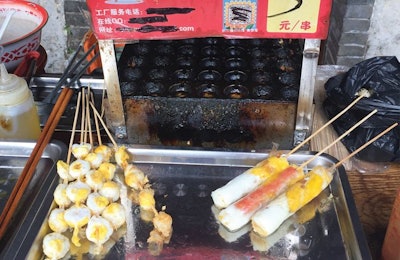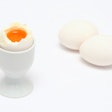
As we all know, China is the world's giant in terms of table egg production, with 26.5 million tons of eggs produced in 2016.
In fact, that year, China's egg industry produced more chicken eggs than the combined production of the U.S., India, Mexico, Japan, Russia, Brazil, Indonesia, Iran, Turkey, France and Ukraine -- the next 11 countries in the world ranking for egg production.
You may have missed the word “chicken egg” in the previous sentence.
This is an essential qualifier as China also produced about 5.5 million tons of eggs from birds other than chickens in 2016. Egg production from ducks, quails, geese and pigeons in China was higher than the combined production of chicken eggs in Malaysia, Germany, Spain, Colombia, Pakistan, Italy and the U.K. -- countries ranked from the 13th to 19th in the global ranking of chicken egg producers.
Many have said that the borders of China give the country the shape of a laying hen; looking at these production figures, this would make sense.
From small beginnings
China has not always been the dominant player in chicken egg production.
In the early 1960s, when China had only 668 million citizens, egg farmers could only supply about 30 eggs per person per year. Today, in spite of a population that has more than doubled to 1.4 billion, each person can afford to eat, on average, 306 eggs per year -- all produced locally. This means egg production has grown 26-fold while consumption is 10-fold higher. No other country has done better.
In 1985, China became the No. 1 chicken egg-producing country, overtaking the U.S. by a mere additional 270,00 tons, and the rest is history.
The rapid growth in China over the past three and a half decades has been achieved through the hard work of hundreds of thousands of small egg farmers. In 2016, the average flock size was estimated at 5,450 hens and the top 10 egg farms accounted for less than 3 percent of total Chinese production.
But egg production in China is changing rapidly. In 2017, 12 companies had more than 1 million hens, and the average flock size is expected to jump to 50,000 hens by 2020. The consolidation of the egg sector is strongly encouraged by the Chinese government as a way to improve food safety records and to ensure compliance with new farm waste management regulations.
The love of the Chinese for eggs is evident when one goes to the local grocery store, walks along the food stalls in busy streets or stops in a restaurant.
In stores, egg counters are extremely colorful and varied. In addition to eggs -- chicken, duck, and quail -- sold in bulk, and which still represent the vast majority of egg sales, retailers offer a multitude of packaged eggs ranging from packs of single cooked eggs to the beautifully designed, sturdy and sophisticated packages used for the 60-egg cases typically bought as gifts for friends and business acquaintances.
On many street corners, you can buy egg kebabs or sweet egg tarts. In restaurants, one should try at least once the “pidan,” also known as century eggs or preserved eggs. Mostly from ducks, the eggs are wrapped in clay and dipped into a curing solution to raise the internal pH of the raw eggs. At the end of the process, lasting from a few weeks to several months, the yolk takes a dark green color with a creamy consistency while the albumen – difficult to call it now egg white -- becomes a dark brown translucent jelly with a salty flavor. Century eggs may look strange to some, but they sure taste great.
How to increase African egg production, consumption

















